The diameter of the earth is 12,756,000m and the diameter of a mustard seed is 1mm.
Now lets consider the mass of Sun.
Mass of the Sun is 1,989,000,000,000,000,000,000,000,000,000 kg. Its a very large number.
What is the size of a bacteria?
The size of a bacteria is 0.0000005
How do scientists and engineers handle such large values?
Very large and very small numbers are represented in scientific form or scientific notation. Scientific notation is representing numbers using exponents. For very large numbers we use positive exponents and for very small numbers we use negative exponents. Exponents are represented with base 10.
-
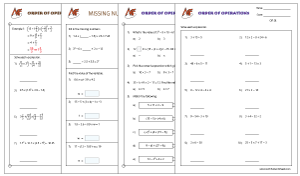
Word Problems -
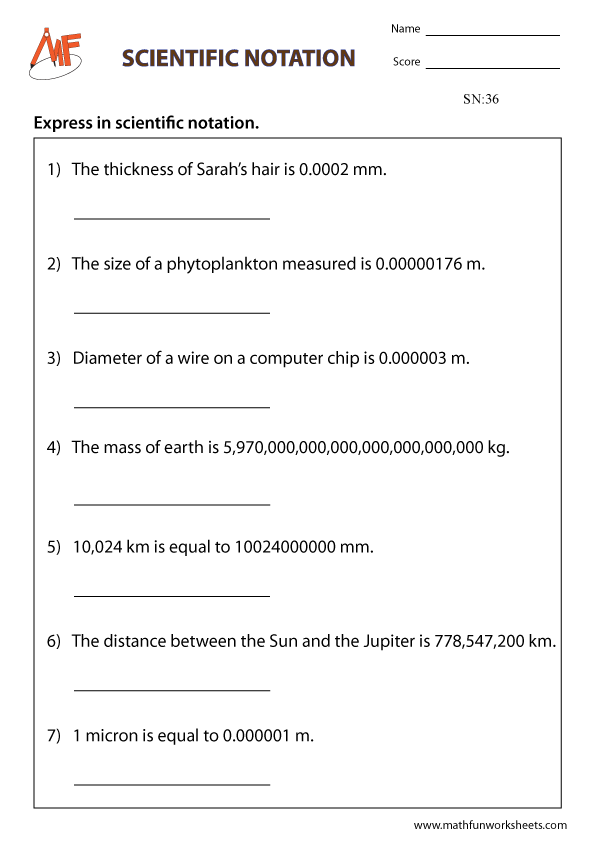
Express in Scientific Notation -
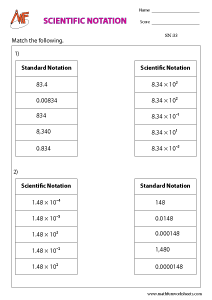
Match the Scientific Notation -
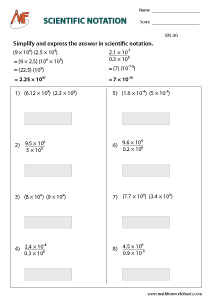
Simplify and express -
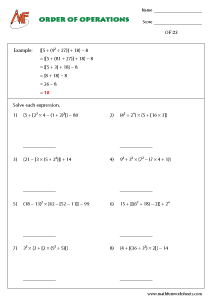
Write in Standard form -
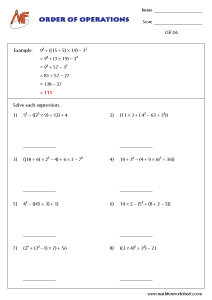
Negative Exponenets -
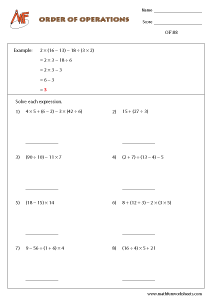
Positive Exponents -
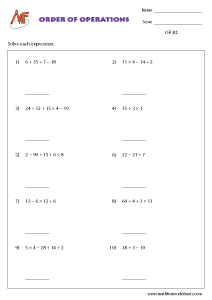
Write in Scientific Notation
In this case the mass of the Sun is represented using positive exponent. It is expressed as 1.989 x 1030. 10 is the Base here and 30 is the Exponent. Thus, when we express positive exponents, the decimal is moved 30 places to the left
We would represent the size of the bacteria using negative exponent. It is represented as 5 x 10-7. So here the decimal point is moved 7 places to the right. When the value of the exponent decreases by 1, the value becomes one- tenth of the previous value.
We can also add and subtract large numbers and small numbers. When we add two numbers, the power of exponents in both the numbers should be made the same. Its is always better to convert the lower power to the highest.
When we multiply two numbers involving exponents, we multiply the numbers and the exponents are added.
am x an = am+n
On dividing two numbers involving exponents, we divide the numbers and the exponents are to be subtracted.
am / an = am-n
In these scientific notation worksheets, you will learn to convert standard numbers into scientific form and scientific form to the usual form. A lot of word problems here gives you the practice to handle very large numbers and very small number most effectively. Print them all for practice.

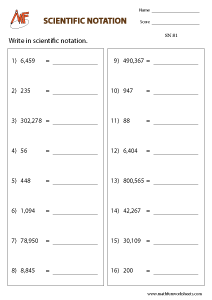
Comments are closed.